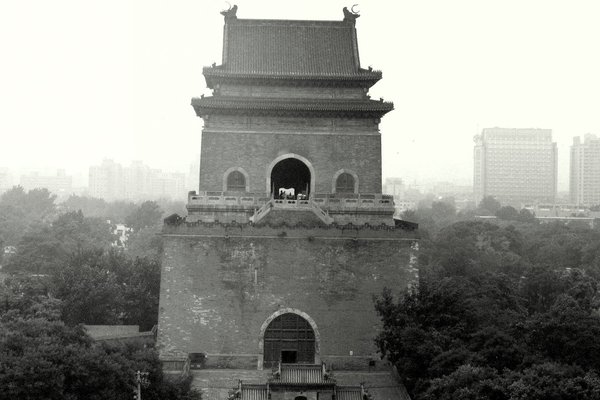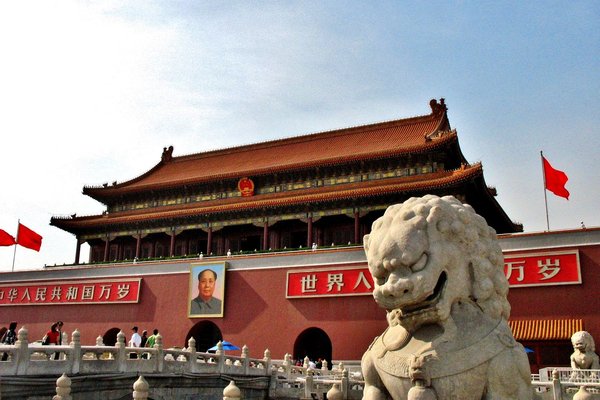China
Beijing Central Axis
Beijing Central Axis: A Building Ensemble Exhibiting the Ideal Order of the Chinese Capital showcases urban planning along Confucian ideas.
The design is based on a symmetrical north-south axis with a ‘centre’. The Axis is 7.8 kilometres long and stretches from the Bell and Drum Towers to the Yongdingmen Gate, with 15 major landmarks along the way such as the Forbidden City, the Temple of Heaven and Tian'anmen Square.
Community Perspective: Reviewers wonder why this needed to be a separate inscription, as parts have been inscribed as other WHS also. Kyle focused on what is newly inscribed.
Site Info
Official Information
- Full Name
- Beijing Central Axis: A Building Ensemble Exhibiting the Ideal Order of the Chinese Capital (ID: 1714)
- Country
- China
- Status
-
Inscribed 2024
Site history
History of Beijing Central Axis
- 2024: Inscribed
- Inscribed
- 2020: Upstream Process
- Upstream process
- 2013: Revision
- Includes former TWHS Beihai Park (1996)
- Type
- Cultural
- Criteria
- iii
- iv
Links
- UNESCO
- whc.unesco.org
- Official
-
- bjaxiscloud.com.cn — Beijing Central Axis
All Links
UNESCO.org
- whc.unesco.org — whc.unesco.org/
Official Website
- bjaxiscloud.com.cn — Beijing Central Axis
News Article
- Dec. 27, 2024 globaltimes.cn — Beijing's Zhengyang Gate arrow tower reopens to public
Community Information
- Community Category
- Urban landscape: Asian
Travel Information
One million visitors or more
Exact locations inscribed twice (or more)
Recent Connections
-
Trans-Siberian Railway
Beijing Station
-
Yongle Emperor
"The construction of the new capital, w…
-
Beijing hotspot
Connections of Beijing Central Axis
- Individual People
-
-
Yongle Emperor
"The construction of the new capital, which took place from 1407 to 1420, employed hundreds of thousands of workers daily. At the heart of Beijing was the official Imperial City, with the Forbidden City serving as the palace residence for the emperor and his family." (wiki)
-
Jean-Michel Jarre
In 2004, Jarre opens the "Year of France in China" with a concert in the Forbidden City and on Tiananmen Square. (Wikipedia) -
Mao was here
Mao is here (Chairman Mao Memorial Hall, Tiananmen Square)See en.wikipedia.org
-
Odoric of Pordenone
He spent three years in the imperial capital of Khanbaliq (now Beijing) (wiki) -
Marco Polo
ICOMOS ackowledges the 'Travels of Marco Polo' can be considered a 'valuable source of information' in relation to the nominated property, but not enough for 'global significance'. "ICOMOS notes that while the Travels of Marco Polo is an important literary work, it is not solely associated with the nominated property and its timeframe corresponds only to the initial phase of the Axis during the Yuan Dynasty and not to the Ming Dynasty when its major development took place. The nomination dossier mentions that the book describes in detail the layout of the nominated property when it was established as Dadu, and ICOMOS considers that as such, it can be used as a valuable source of information, but the association does not itself demonstrate outstanding global significance." - AB Evaluation
-
- Geography
-
-
Linear inscriptions
-
Trans-Siberian Railway
Beijing Station
-
Located in a Capital City
Beijing (Capital of China)
-
- Trivia
-
-
One million visitors or more
Forbidden City (Palace Museum): Visitors (2023): ~9.3 million (daily-capped) -
Dragon
"Inside (Jufu Hall), the wooden beams are adorned with lacquered images of imperial golden dragons."See www.wmf.org
-
On Passports
Chinese Passport: Beijing & Extra Page Temple of Heaven -
Olympic Venues
the men's marathon in Beijing in 2008 started in Tiananmen Square -
WHS within walking distance
Imperial Palace (1987), Temple of Heaven (1998), Grand Canal (2014) *Wanning Bridge (Old Beijing City Section of Tonghui Canal) -
On Banknotes
Great Hall of the People on ¥100 (October 1, 1999, 2005 & 2015) Zhengyangmen ¥500 First Series (September 10, 1949) Tiananmen Square ¥1 Second Series (March 1, 1955-January 1, 1999, March 25, 1961-January 1, 1999), ¥10 Third Series (1965-July 1, 2000)
-
- History
-
-
Contains significant structures from the 20th Century
The most extensive urban intervention was the total remodelling and expansion of Tian'anmen Square which was finalised in 1977. In this period, the Monument to the People's Heroes (1952-1958), the National Museum of China (1958-1959), the Great Hall of the People (1958-1959), and the Chairman Mao Memorial (1976) were built. To accommodate the growing city traffic, the Zhengyangmen Gate and surrounding areas were renovated in 1914-1915 and the Yongdingmen Gate and surrounding areas were demolished and renovated in the 1950s." - AB Evaluation -
Contains significant structures from the 21st Century
Yongdingmen Gate Tower (2005) "The Yongdingmen Gate Tower and Archery Tower were demolished in 1957 to relieve traffic pressure. Yongdinmen Gate's reconstruction project started in 2004 and was completed in the following year. The reconstruction work was strictly based on the archaeological findings and research results from the historical records." - Nomination File -
Inscribed in connection with an anniversary
Just in time for the 75th Anniversary since the Proclamation of the People's Republic of China on October 1st, 1949 in Tiananmen Square. [1949 / 2024]See en.wikipedia.org
-
- Architecture
-
-
Glazed tiles
"Jufu Hall, one of the major buildings at the site, possesses a multi-colored façade and a broad roof lined with glazed tile"See www.wmf.org
-
Chinese Garden
Jingshan Hill "The Jingshan Hill is the tallest point and a key skyline node on the Beijing Central Axis. Its position and relationship to the north of the Forbidden City demonstrate the planning concept of Chinese palaces and gardens. Its towering hill, picturesque garden, and ornate buildings enrich the architectural sequence of the Axis." - Nomination File
-
- World Heritage Process
-
-
Perfect Inscriptions
2024 -
Reconstruction regarded as unsatisfactory
"ICOMOS notes two elements of concern in relation to authenticity. The first relates to the remodelling and extension of Tian'anmen Square Complex during the 20th century. The second concern refers to the reconstruction of the Yongdingmen Gate in 2005 after its demolition in 1957. ICOMOS considers that the authenticity of the Tian'anmen Square Complex and the Yongdingmen Gate has been compromised." - AB Evaluation -
Exact locations inscribed twice (or more)
3 times: Imperial Palace of Beijing, Temple of Heaven, Grand Canal (a section – Wanning Bridge – of the Old Beijing City Section of Tonghui Canal)
-
- Religion and Belief
-
-
Confucianism
"The Tilling Ritual and other agricultural ceremonies were first outlined by Confucius in the Li Ji, or Book of Rites, and they endured at Xiannongtan for centuries."See www.wmf.org
-
- Human Activity
-
-
Communism
The most extensive urban intervention was the total remodelling and expansion of Tian'anmen Square which was finalised in 1977. In this period, the Monument to the People's Heroes (1952-1958), the National Museum of China (1958- 1959), the Great Hall of the People (1958-1959), and the Chairman Mao Memorial (1976) were built." - AB Evaluation
-
- Constructions
-
-
Large squares
Tiananmen Square 215,000 m2See en.wikipedia.org
-
Canals
"The Wanning Bridge has been vital for north-south traffic since its construction in the Yuan Dynasty. It is an important bridge connecting the city's north-south traffic, and the inter-section between the Yuhe River and the Schichahai Lake area, where the Beijing Central Axis joins the Grand Canal." - Nomination File -
Zero Mile or Kilometer Markers
"The kilometre zero point for highways is at Tiananmen Square, just outside the Zhengyangmen Gate. It is marked with a plaque in the ground, with the four cardinal points, four animals, and "Zero Point of Highways, China" in English and Chinese." - Wiki -
Freestanding Bell Tower
"The Bell and Drum Towers regulated the opening and closing of gates and other daily activities of citizens." - AB Evaluation -
Notable Bridges
The Axis run from the central platform, crossing the Wanning Bridge and the Houzaihongmen Gate, which corresponded to the north gate of the imperial city." - AB Evaluation "Wanning Bridge, located in Di'anmenwai Street, Xicheng District, was built in the 22nd year of the Zhiyuan Period of the Yuan Dynasty (1285 AD). The stone bridge from the Yuan Dynasty strides over the estuary where Shichahai's water flows into the Yu River, and was the starting point of the Grand Canal in the Yuan Dynasty. A World Cultural Heritage sign for the Grand Canal stands next to the bridge." - Wanning Bridge -
Monumental Columns
There's a huabiao in front of the Tiananmen in Beijing. Huabiao is a type of ceremonial column used in traditional Chinese architecture. - WikiSee en.wikipedia.org
-
Famous Bells
King of Ancient Bells, located in the Bell Tower "Inside the tower is a bronze bell weighing 63 metric tons and measuring 5.5 meters tall. Cast during the Yongle reign (1403-1424) of the Ming Dynasty, the bell is hung from an octagonal frame." - Nomination File "The bronze bell hanging on the second floor of the Bell Tower, inscribed with "Made in the Yongle Reign of Ming Dynasty" and weighing 63 tons, is known as the "King of Ancient Bells" in China." - Beijing Tourism -
Mausolea
Mao Zedong (1893 - 1976) -
Sites of Parliament
Great Hall of the People: " It is used for legislative and ceremonial activities by the government of the People's Republic of China and the ruling Chinese Communist Party. The People's Great Hall functions as the meeting place for the full sessions of the National People's Congress, the Chinese legislature..." (wiki)
-
- WHS on Other Lists
-
-
World Monuments Watch (past)
Xiannongtan (Temple of Agriculture) 1998, 2000See www.wmf.org
-
- Timeline
-
-
Built in the 13th century
The Central Axis originated in the Yuan Dynasty (1271-1368) (AB ev)
-
- WHS Hotspots
News
- globaltimes.cn 12/27/2024
- Beijing's Zhengyang Gate arrow tow…
Recent Visitors
Visitors of Beijing Central Axis
- 4lex
- AC
- Adam Hancock
- Adrian Turtschi
- Afshin Iranpour
- Albert
- Alberto Rodriguez Gutierrez
- Alejandro Lau
- Alexander Barabanov
- Alexander Lehmann
- Alexander Parsons
- Alex Goh
- Alex Marcean
- AlexSchedel
- A. Mehmet Haksever
- Ammon Watkins
- amychemu
- Ana Lozano
- Anna Wludarska
- Antonio J.
- Artur Anuszewski
- ashombob
- Aspasia
- AustralLights
- Bamse
- BaziFettehenne
- Bernard Joseph Esposo Guerrero
- Bill Koo
- Bill Maurmann
- Bin
- Boj
- Bram de Bruin
- Carl Le Boeuf
- Carlo Sarion
- Casey
- cflw
- Chalamphol Therakul
- Chantal den Haan
- chenboada
- Cheryl
- Christravelblog
- Claire Bradshaw
- Clyde
- Colossus
- Corinne Vail
- Csaba Nováczky
- ctravel
- cutecid
- Cyberczar
- CynthiaW
- Daniela Hohmann
- Deffra
- Dimitar Krastev
- dmux7
- Dolemite92
- Dr. Caligari
- Dwight Zehuan Xiao
- Elisabeth Fransisca Situmorang
- eljx1988
- Els Slots
- EmmonsLiu
- Erik Jelinek
- Eva Kisgyorgy
- Fan Yibo
- Federico P.
- FK
- Frederik Dawson
- George Gdanski
- GeorgeIng61
- Gernot
- Gilles
- Harald T.
- H Beswick
- Helios
- henryjiao18
- heywhatever2
- hotpickle
- Hurrvinek
- Ian Cade
- Ingrid
- IreneKD
- Ivan Rucek
- ivantham
- Jacob Choi
- Jan Zimmermann
- Jarek Pokrzywnicki
- Javier
- Javier Coro
- Jawnbeary
- jballard650
- Jeanne OGrady
- Jeffrey Chai
- Jens
- Jezza
- JL
- J_neveryes
- JobStopar
- Joel on the Road
- John Smaranda
- Jonas Kremer
- jonathanfr
- Jon Opol
- Jonoprout
- JoStof
- Joyce van Soest
- jxrocky
- Karito Vies
- Kasper
- Ken DJ
- KentishTownRocks
- Kerékgyártó
- Kevin McFarland
- KngAlaric
- Kristin
- Krzysztof B
- Kurt Lauer
- Kyle Magnuson
- Laetitia Yin
- lappelduviiide
- Lee Kai Loong
- Li
- Liamps91
- lichia
- Linz
- Loic Pedras
- Lucio
- Ludvan
- Luis Filipe Gaspar
- lynnz317@aol.com
- Maciej Gil
- MarcoB_0
- Mariam
- Martin
- Matthewsharris
- Michael Turtle
- Mihai Dascalu
- Mikko
- Miloš Tašković
- miri2808
- Mo-han Je
- nan
- NH1984
- Nicolas
- Nihal Ege
- _oscar
- PabloNorte
- Patrik
- Paul Schofield
- Pchxiao
- PeterH
- Peter Lööv
- Petteri
- Philipp Leu
- Philipp Peterer
- phillipmeng
- Priyaranjan Mohapatra
- puessergio
- Rahelka
- Ralf Regele
- Randi Thomsen
- ReallyDeepThoughts
- Reisedachs
- Remski
- Reza
- Rick Ohm
- Rob Wilson
- Roger Ourset
- Rudegirl
- sakohju
- Samuel Turtschi
- Samy G
- Sandra!
- S. Anril Tiatco
- Sclowitz
- Sergio Arjona
- Shandos Cleaver
- Shijie ZHU
- shwabb1
- Simonf
- SnakeGreen
- Solivagant
- Ssong.x
- Stan
- Stanislaw Warwas
- StaziG
- Svein Elias
- SymonMajewski
- Szabolcs Mosonyi
- Szucs Tamas
- Tamara Ratz
- Taotao Chen
- Tatiana Nikulnikova
- Tcchang0825
- Thomas Buechler
- Thomas van der Walt
- Thorben
- Tikhon Puliaev
- Tim Allen
- Timonator
- Timothy C Easton
- tingmelvin
- Tony H.
- trekkie900
- Twobaconsandaboston
- Valentina
- Vanessa Buechler
- Velvetlapis
- Vincent Cheung
- VLabhard
- VMThumper
- voyager
- Walter
- wantrain.
- Wo_ko
- Xander Huang
- Xiong Wei
- Xiquinho Silva
- Yang Chengyu
- Yi Han Goh
- Yongcheng Liu
- ZCTLife
- zfish
- Zhenjun Liu
- Zoë Sheng
- Zos M
- ZZSong
Community Reviews
Show full reviews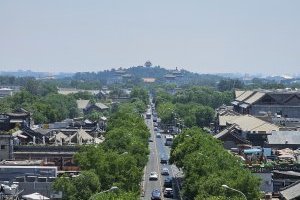
Visited in June 2024 just before the site was added to the WH list. On this review I will focus on the parts of the axis that are not inscribed otherwise, so I'm skipping Temple of Heaven, Forbidden City and Wanning Bridge in this review.
After visiting Temple of Heaven I exited it through the western gate. From here starts Yongdingmen Park and I was surprised to see almost immediately a map of the Beijing Central Axis that showed the core zone and the buffer zone of the WH site! On the map Yongdingmen Park was marked as "Southern Section Road Archeological Sites". Walking bit further into the park there were other maps showing the exact spots of these archaeological sites. Of those 3 marked sites I only saw the one titled as "Stone Road Site North of the Yongdingmen Gate" which according to the information sign is "the material evidence that irrefutably show the location, orientation, engineering techniques, and history of continuous use of the central road, and bear witness to the state ritual traditions that has continued on Beijing Central Axis to this day." Big words for what is essentially now couple stone slabs on the ground. Next to this these stone slabs is however the magnificent Yongdingmen Gate. I was then surprised to learn that this gate was rebuilt in 2005 and nothing around it is original construction (except those stone slabs). Best part of visiting the park and the gate was that there was almost …
Keep reading 0 comments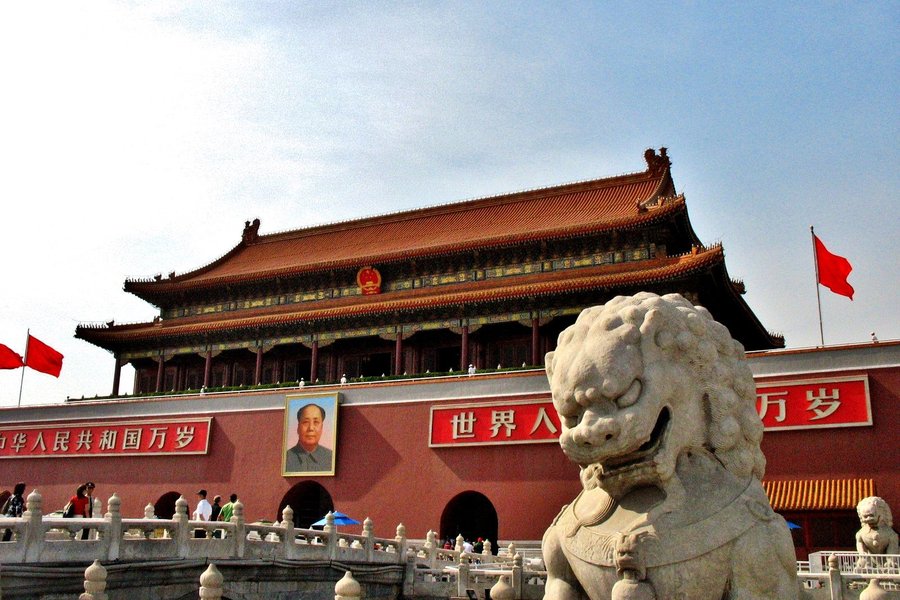
With the Beijing Central Axis joining the World Heritage List, I want to focus on what is newly inscribed. Therefore, in this review I will not include any information about the Old Beijing City Section of Tonghui Canal, the Forbidden City, or the Temple of Heaven. Additionally, I will not focus on sites within the boundaries (primarily after 1949) which do not contribute to the OUV. The Imperial Palace boundary is the moat, therefore plenty of buildings associated with or adjacent to the Forbidden City were previously not inscribed.
From North to South
- Bell Tower - 47.9 meters high, includes a 63 metric ton bell called 'King of the Bells' which was cast in the early 1400's
- Drum Tower - 46.7 meters high, originally included 25 drums though all were lost, the building was rebuilt in the year 1800
- Wanning Bridge - oldest bridge of the Beijing Central Axis, 13th Century Yuan Dynasty, a rare Beijing site predating the Ming Dynasty
- Jingshan Hill - tallest point on the axis and a key viewpoint, includes Chinese Garden landscape with 1,000 year old trees
- Altar of Land and Grain - an important part of the 'ideal capital of a Chinese city', the Altar of Land and Grain must be on the LEFT
- Imperial Ancestral Temple - an important part of the 'ideal capital of a Chinese city', the Ancestral Temple Grain must be on the RIGHT
- Upright Gate - part of the entrance to the Forbidden City, used for storage for ritual …
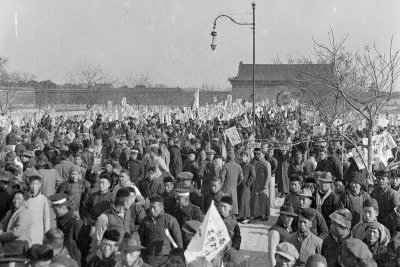
I definitely like this nomination but it needs to be limited to only important areas. I used this picture (public domain) because it shows 100 years ago Tiananmen Square was an important place and unfortunately the modern student protests including a car terrorist attack in 2013 make us feel the place isn't right for UNESCO. It was also massively renovated with the people's hall, Mao's mausoleum (which used to be the Gate of China area), the museum, none of these should be listed as world heritage. This is only the square, with the other locations usually the same: important, old, but renovated and improved. My picture of Qianmen above (not actually public domain) shows a modern shopping street. It used to be different, even a brothel at a time, but it would only get nominated as the modern look.
If you haven't seen the axis it would surprise me because they even want to add the Temple of Heaven and the Tiananmem Square is hard to miss, you'll probably run into one of the old gates or Beihai park. Like I said I can't see this not getting inscribed but it will cause a lot of problems if not limited to just the old gates.
Keep reading 0 comments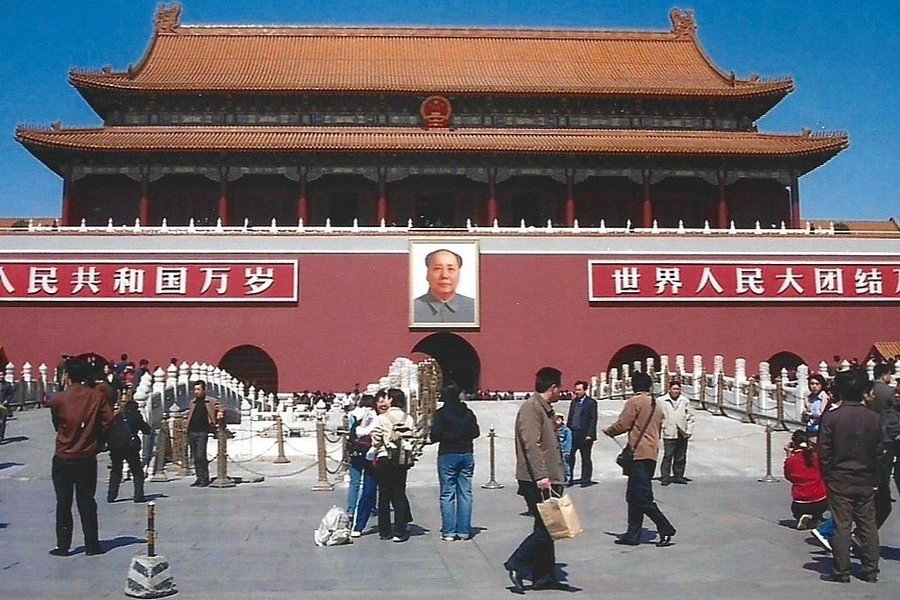
While Beijing is a great old city rich of cultural heritages, I find it hard to understand why the Central Axis can be nominated as a new World Heritage item.
The nomination contains these sites: Yongding Gate, Temple of Heaven, Temple of Agriculture, Tian'anmen Square complex, Imperial Ancestral Temple, Altar of the Land and Grain, the Forbidden City, Jingshan Hill, Bell Tower, Drum Tower, Nanluoguxiang, Yandai Bystreet historic area, and the Beihai water system.
The Forbidden City is already listed as World Heritage (Imperial Palaces); Temple of Heaven is also listed as an independent item; Beihai water system is part of The Grand Canal. We don’t need to give them another world heritage honor to emphasize their importance.
Imperial Ancestral Temple, Altar of the Land and Grain are royal temples connected to the Forbidden City, and similarly Jingshan Hill is also a royal garden connected to the Forbidden City. They all can be an extension of Imperial Palaces.
Temple of Agriculture is near by Temple of Heaven at the south, and they are for the same purpose basically: Praying to the Sky (Heaven, same word in Chinese) for good weather in order to have good harvest (Agriculture). Thus Temple of Agriculture is better to be an extension of Temple of Heaven.
The government demolished Beijing City Wall and only left behind a few gates. While Yongding Gate is great, does it still have sufficient OUV? At least Xi’an and Nanjing have the whole city walls …
Keep reading 0 comments
